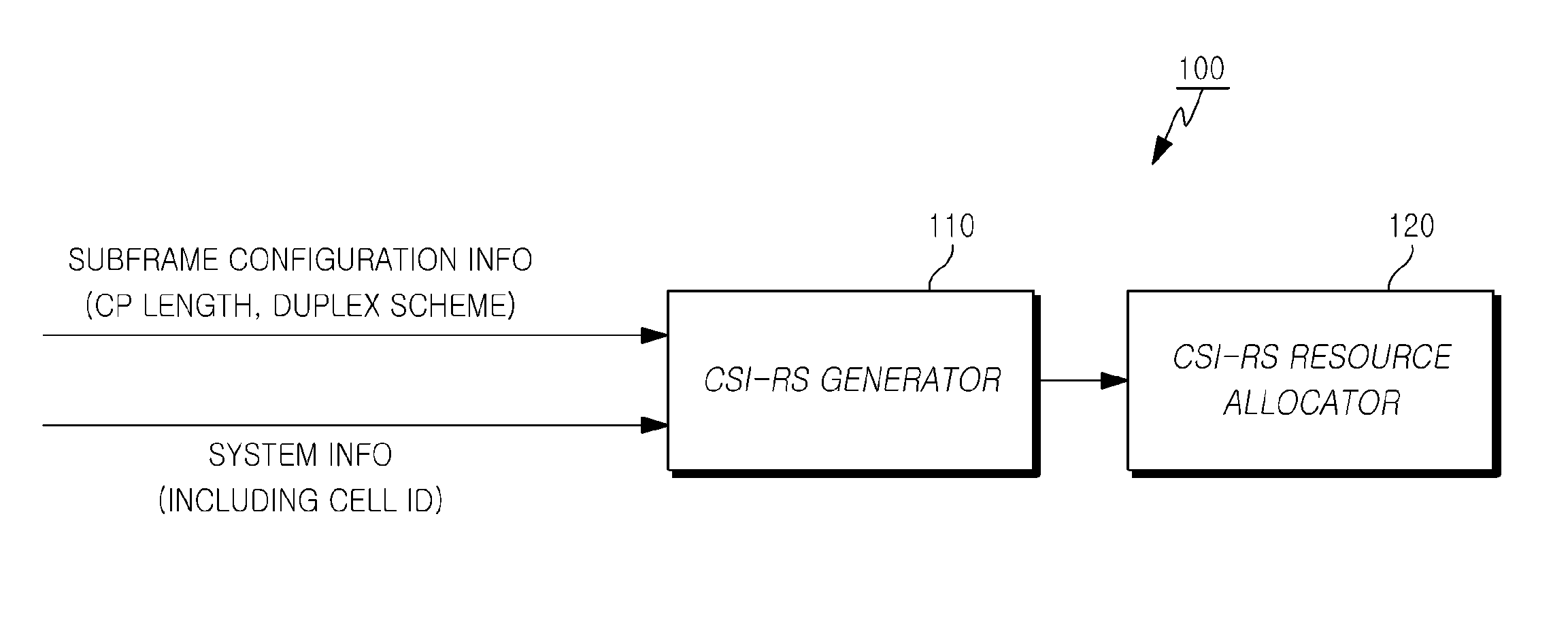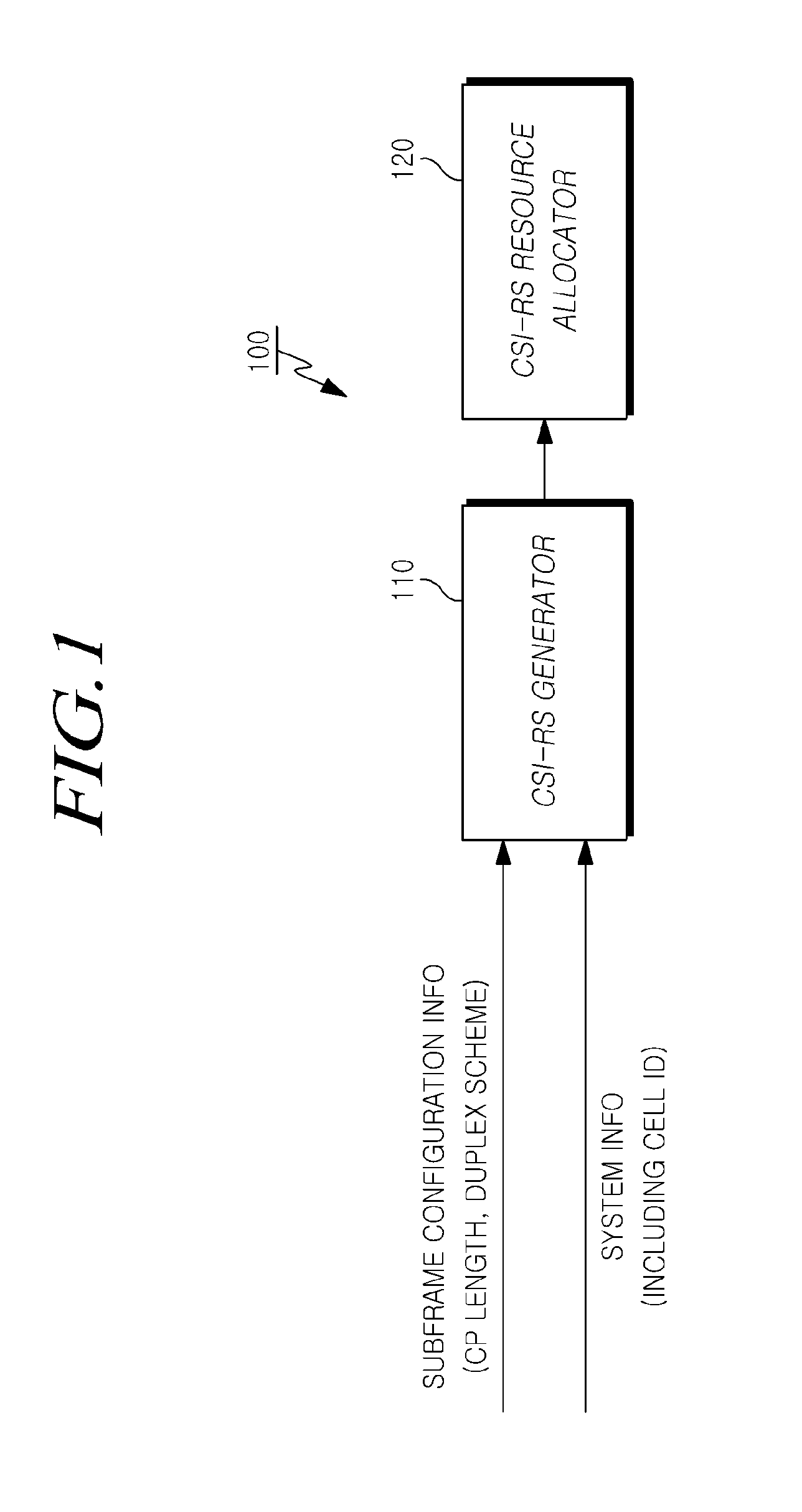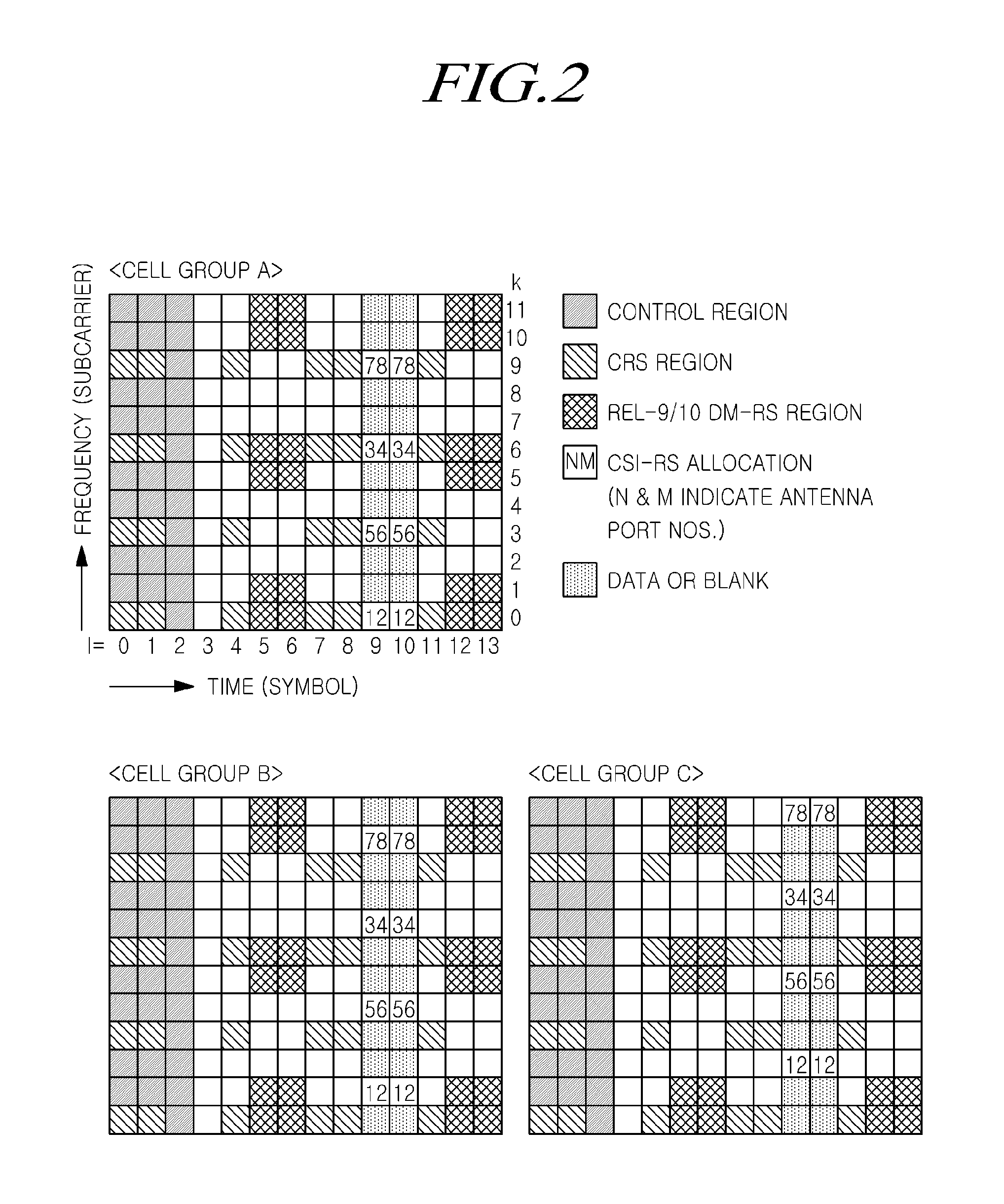Apparatus and method for allocating channel state information-reference signal in wireless communication system
a wireless communication system and information reference signal technology, applied in the field of wireless communication system technology, can solve the problems of insufficient channel information detection with current crss defined for four existing antennas, and no discussion about a scheme for allocating csi-rss to each antenna por
- Summary
- Abstract
- Description
- Claims
- Application Information
AI Technical Summary
Benefits of technology
Problems solved by technology
Method used
Image
Examples
first embodiment
[0090]FIG. 2 shows a CSI-RS allocation scheme according to the present invention, for a downlink subframe in which the CP is a normal CP and the duplex scheme is FDD or TDD.
[0091]Further, in the first embodiment of the present invention as shown in FIG. 2, a duplicated allocation of AP5 is allowed (that is, CSI-RS allocation to the location of AP5 is allowed), without consideration on whether to use AP2 or AP3 (that is, it is the same regardless of either if AP2 or AP3 is used or if AP2 or AP3 is not used).
[0092]The following configuration is applied to the first embodiment of the present invention.[0093]Two consecutive OFDM symbols are used, which may include the 10th and the 11th symbols (i.e. l=9 and 10).[0094]Every two antenna ports are tied into one pair, and pairs are multiplexed by FDM while two consecutive OFDM symbols for two antenna ports within each pair are multiplexed by CDM (i.e. CDM-T) by using an orthogonal code such as the Orthogonal Cove Code (OCC).
[0095]In the pre...
second embodiment
[0109]In the present invention, whether to use AP2 or AP3 is not considered (that is, it is the same regardless of either if AP2 or AP3 is used or if AP2 or AP3 is not used).
[0110]The following configuration is applied to the second embodiment of the present invention.[0111]Two consecutive OFDM symbols are used, and the CSI-RSs are allocated to two different consecutive symbol axes according to the cell.[0112]It is the same as in the first embodiment of the present invention shown in FIG. 2 in view of that an antenna port is identified by an OCC code and the CSI-RSs are allocated to REs corresponding to one half of the number of antenna ports for each symbol in the second embodiment of the present invention.[0113]For a total of three basic cell groups, CSI-RSs may be configured. In the first cell group, CSI-RSs are allocated to the 10th and 11th symbol axes and to the other REs except for the REs, at which AP5 is located, in the 10th and 11th symbol axes. In the second cell group, C...
third embodiment
[0120]FIG. 4 shows a CSI-RS allocation scheme according to the present invention, for a subframe in which the CP is a normal CP, the duplex scheme is TDD, and the number of OFDM symbols allocated to the downlink (DwPTS) within the subframe is 11 or 12. In this event, the subframe may be the special subframe in TDD as described above.
[0121]Further, in the third embodiment of the present invention, duplicated allocation of AP5 is allowed, and whether to use AP2 or AP3 is not considered.
[0122]The following configuration is applied to the third embodiment of the present invention shown in FIG. 4.[0123]Two consecutive OFDM symbols are used, which may include the 6th and the 7th symbols (i.e. l=5 and 6).[0124]It is the same as in the first embodiment of the present invention shown in FIG. 2 in view of that an antenna port is identified by an OCC code and the CSI-RSs are allocated to REs corresponding to one half of the number of antenna ports for each symbol in the second embodiment of th...
PUM
 Login to View More
Login to View More Abstract
Description
Claims
Application Information
 Login to View More
Login to View More - R&D
- Intellectual Property
- Life Sciences
- Materials
- Tech Scout
- Unparalleled Data Quality
- Higher Quality Content
- 60% Fewer Hallucinations
Browse by: Latest US Patents, China's latest patents, Technical Efficacy Thesaurus, Application Domain, Technology Topic, Popular Technical Reports.
© 2025 PatSnap. All rights reserved.Legal|Privacy policy|Modern Slavery Act Transparency Statement|Sitemap|About US| Contact US: help@patsnap.com



